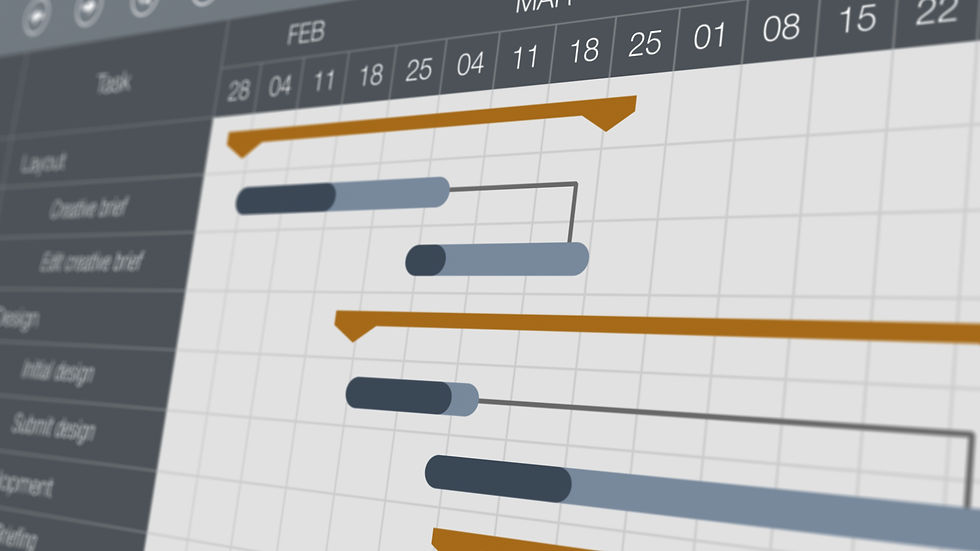Primavera P6 Date Fields and Their Use
- Tyler Babin, PMP

- Feb 13, 2023
- 3 min read
Primavera P6 is a project management software that allows users to plan, schedule, and manage resources for construction, engineering, and other types of projects. One important aspect of this software is the ability to track and manage project dates, which is done using various date fields.

There are several different types of date fields in Primavera P6, each with its own unique purpose and use. Some of the most common date fields include:
Start Date: This field represents the planned start date for a particular project activity or task. It is used to determine the overall project schedule and to identify any potential delays or schedule conflicts.
Finish Date: This field represents the planned finish date for a particular project activity or task. It is used to determine the overall project schedule and to identify any potential delays or schedule conflicts.
Actual Start Date: This field represents the actual start date for a particular project activity or task. It is used to track the progress of the project and to identify any deviations from the planned schedule.
Actual Finish Date: This field represents the actual finish date for a particular project activity or task. It is used to track the progress of the project and to identify any deviations from the planned schedule.
Target Start Date: This field represents the target start date for a particular project activity or task. It is used to set a goal for the project and to track progress towards that goal.
Target Finish Date: This field represents the target finish date for a particular project activity or task. It is used to set a goal for the project and to track progress towards that goal.
Original Start Date: This field represents the original start date for a particular project activity or task. It is used to track changes to the project schedule and to identify the impact of those changes on the overall project.
Original Finish Date: This field represents the original finish date for a particular project activity or task. It is used to track changes to the project schedule and to identify the impact of those changes on the overall project.
In addition to these fields, Primavera P6 also allows users to create custom date fields to track specific information that is important to their project.
The date fields in Primavera P6 are used in several ways to manage the project schedule. These include:
Tracking progress: By comparing the planned start and finish dates to the actual start and finish dates, users can track the progress of the project and identify any delays or schedule conflicts.
Identifying critical paths: By analyzing the project schedule, users can identify the critical paths for the project and focus resources on completing those tasks first.
Managing resources: By tracking the start and finish dates for different project activities, users can manage the availability of resources, such as personnel and equipment, and ensure that they are used effectively.
Managing costs: By tracking the start and finish dates for different project activities, users can also manage the costs of the project and ensure that they stay within budget.
Communicating with stakeholders: By sharing the project schedule with stakeholders, users can keep them informed about the progress of the project and any potential delays or schedule conflicts.
Overall, date fields in Primavera P6 are an essential tool for managing and tracking project schedules, resources, costs, and progress. They allow users to identify potential issues early on and take steps to address them, ultimately helping to ensure the success of the project.



Comments